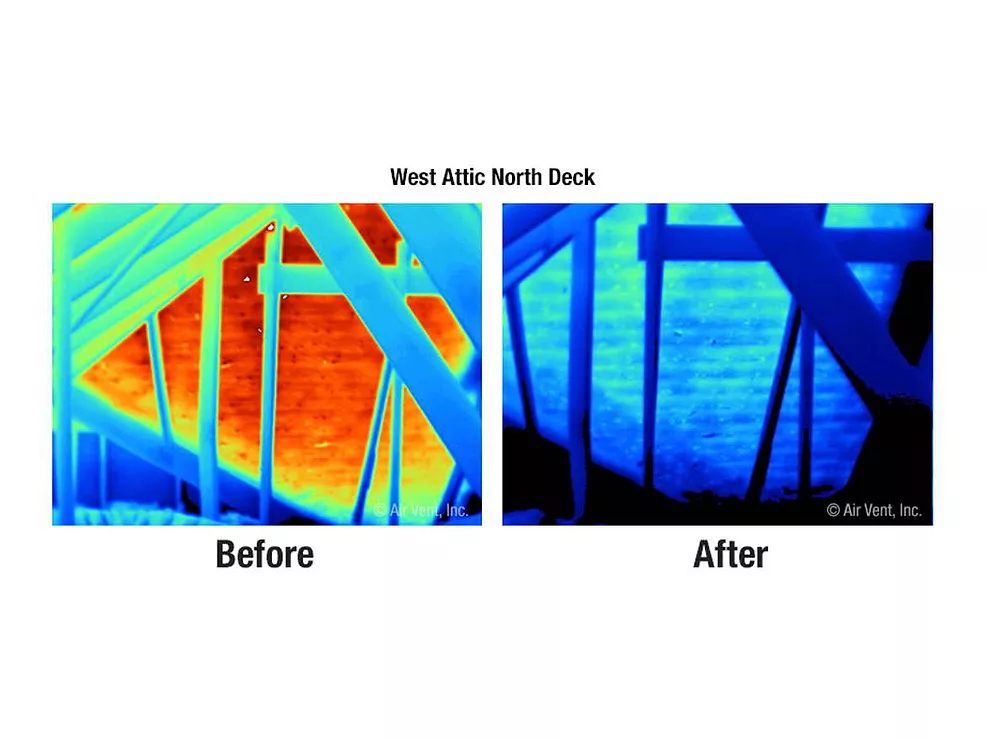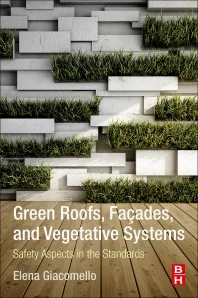Green Technology Turns America's Roofs Into Energy Assets
As building managers continue to look for ways to reduce energy costs while facing America’s increasing demands for green compliance, many have begun to look to their roof as a way to satisfy both needs. Suddenly, a building’s roof has turned into an energy asset, with emerging green technology satisfying energy demands through a variety of alternatives. Not only is green building good for the environment, and for a building’s bottom line - it’s also good for the roofing industry.

Buildings are one of the heaviest consumers of energy in the United States, and, according to the U.S. Department of Energy (DOE) Building Energy Databook, buildings represent 70 percent of U.S. consumption for electricity. As building managers continue to look for ways to reduce energy costs while facing America’s increasing demands for green compliance, many have begun to look to their roof as a way to satisfy both needs. Suddenly, a building’s roof has turned into an energy asset, with emerging green technology satisfying energy demands through a variety of alternatives. Not only is green building good for the environment, and for a building’s bottom line - it’s also good for the roofing industry.
“As demand increases to find economical energy sources, more companies are exploring alternative solutions for their energy needs,” said Mark Santacrose, CEO and president of Tecta America Corp. “Soaking up the sun all day on top of your building, the roof is an excellent place to start.”
Natural light harvesting, cool roof coatings, metal roofs, vegetative roofs, skylights, and photovoltaic cells are all examples of these new green technologies which can help to keep buildings cooler, save energy by utilizing natural light, reduce stormwater runoff, and extend the useful life of the roof.
As companies consider implementing rooftop energy solutions, hiring a roofing company is a logical starting place, given its experience in handling penetrations, maintaining structural and waterproofing integrity, and following safety standards, as well as manufacturers’ warranties, regarding installation.
Roofing companies recognize what increased demand can mean, and have turned their attention to technologies that will help their customers harness the energy a rooftop solution can provide. But ramping up to meet the demands which green technology brings is a serious commitment financially, in terms of manpower, technology, training, and equipment. “Our sales team has had to learn a whole new vocabulary, measuring in kWh, not square feet, understanding financing alternatives, calculating ROI and paybacks based on a building owner’s unique circumstances and being well-versed in the Leadership in Energy and Environmental Design (LEED) certification process,” said Dave Schupmann, Vice President, Sales, Tecta America. “We’ve trained our sales force extensively so that they can help educate the customer on the appropriate environmental alternative for their specific needs.”
Dark roofs absorb sunlight and increase the air conditioning demands of buildings during the summertime, when the difference between roof surface temperature and ambient air temperatures can be as much as 90 degrees Fahrenheit. With a highly reflective cool roof coating, membrane, or metal roof, the difference is roughly 20 degrees. Cooler air going into rooftop air conditioning units means less energy output to drop the temperature for use within the building. Therefore, cool roofs are effective in reducing cooling energy use and the subsequent Heat Island Effect, whereby an urban environment is often as much as 10 degrees hotter than surrounding areas.
According to the Heat Island Group, an organization that analyzes and implements solutions to the summer warming trends occurring in urban areas, experiments on buildings in Florida and California show that cool roof coatings can reduce summertime daily electricity use by as much as 63 percent. Even cities in cooler climates, such as Chicago, have embraced cool roofing technology, with the inclusion of its cool roof ordinance enacted in 2003 by Chicago’s building energy code.
And, in a recent study funded by the U.S. Environmental Protection Agency, a detailed analysis of energy-saving potentials of light-colored roofs in 11 metropolitan areas in the United States found estimated saving potentials of approximately $175 million per year. Extrapolated national energy savings could be approximately $750 million per year. Talk about cool.
Green roofs can either be an integrated system, which is actually built right onto the rooftop in an intricate system of layers, or a modular system, which can be assembled on site and applied over the top of an already existing rooftop structure. Both systems use plants tolerant of the rooftop environment (mostly succulents) and lightweight growing media blended and engineered for vegetative roofs.
Tecta America Green Roof Project Manager Angie Durhman said, “There’s much more to a green roof than simply filling the spec - clients look to you to provide the knowledge to choose the right plants and growth media to suit the needs of the building, and provide the maintenance required for those projects to be sustainable.”
While there are many different systems of green roofs, for the most part there are two basic types of green roofs - extensive and intensive. Extensive green roofs are lightweight systems with thin layers of drought-tolerant, self-seeding plants requiring little irrigation or fertilization after establishment. They can be built on a flat roof, or on a sloped roof, with specially designed structural “pockets” to ensure that the soil media stays in place. Intensive green roofs are more ornamental and aesthetic, using deeper soil media and often requiring irrigation.
A modular green roof system allows a facility manager the option of moving vegetation around the roofscape or removing it to access the roof membrane. A modular system can be used on sites where craning soil may be difficult or expensive, such as skyscrapers or roofs accessible by elevator, and may be more economical in small projects, like terraces or residential applications. The modular system can be pre-planted, or the units can be installed on the roof and filled on the site.
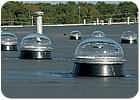
Light pipes are direct renewable fixtures that funnel natural light from large, plastic bubbles on the roof, and channel it through highly reflective, broad pipes. Most units are self-contained, require no external power, and comply with the Uniform Building Code standard for plastic skylights. The reflected natural light they produce provides enough illumination on most days to turn off other artificial lighting, thereby decreasing energy usage.
High-efficiency T-8 fluorescent light bulbs, which use half the electricity of high intensity discharge lights (HID) commonly used in manufacturing plants today, are used in conjunction with the light pipes, and, so there are no inconsistencies in the lighting due to periodic cloud cover, the system software senses when the lights need to be turned on, off, or dimmed by way of a special sensor.
“Direct renewable technology is emerging as a powerful tool for capturing and focusing sunlight. In facilities where our Apollo Light Pipe is deployed in conjunction with Orion’s high-efficiency fluorescent fixtures and wireless controls, companies have reported lights off in a particular zone for more than 10 hours a day during peak hours when electricity is most expensive,” said Neal Verfuerth, CEO and President of Orion Energy Systems, a leading power technology enterprise. “Not only does that reduction of energy consumption have a significant impact on the environment, it just makes good economic sense.”
Equally important to manufacturing productivity, companies utilizing the natural lighting these systems allow have improved the workplace environment for their employees, and many workers have remarked that they felt less tired at the end of the day.
A recent Tecta pilot project utilizing 126 light pipes at a facility in Milwaukee allowed natural light to be the primary light source within the facility, thereby reducing energy needs. The pilot program was so successful that two additional installations are scheduled to utilize similar systems at other facilities.
Solar tracking skylights are another energy saving solution for large commercial buildings. Utilizing a solar-powered motor with reflective mirrors that rotate to follow the sun, the system’s mirrors catch the sunlight and reflect it back into a building, producing two to four times the useful number of daylight hours versus conventional skylights to provide tremendous bottom-line savings.
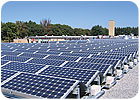
Last year, Tecta America’s JP Patti Roofing of Saddle Brook, N.J., worked with Ecostream, one of the world’s leading sustainable energy providers and a pioneer in the use of sustainable energy, to complete a solar installation on the Pennsville Middle School in Pennsville, N.J. More than 550 panels were installed for a 95 (kWh) non-penetrating solar energy project system, designed to offset energy usage. With more than two decades of experience, Ecostream has installed more than 4,000 renewable energy systems across Europe and the United States.
“By taking a leadership position in the use of solar energy, schools are teaching students about the value of using sustainable energy,” said Brad Burdic, AIA, sales and marketing manager, Ecostream U.S. “Students can learn firsthand that the roof on their school does not emit pollution, produces no greenhouse gasses and uses no finite fossil-fuel resources. At the same time, the installation reduces the long-term energy costs of operating the building.”
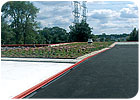
Tecta’s Chicago division, Anthony Roofing, also has a rooftop “sampler” which allows potential clients to see a variety of existing roofing systems. The roof is comprised of a variety of low-slope roofing systems including three varieties of EPDM, modified bitumen, versions of built-up roofing, and several single-ply systems. A metal roofing system is also included. Anthony’s most recent addition is an integrated TectaGreen green roof system. The variety of rooftops allows the companies to physically show visitors the temperature variances relative to the different roofing systems.
“Investing in the technology, personnel, and expertise can be expensive,” said Carol Winfrey, Tecta’s Vice President of Marketing, “but green building is definitely an opportunity for industry leaders willing to make the financial commitment to this emerging trend.”
Whatever the cost, one thing is for sure - environmental building technology is an idea that’s not only green, but growing, and the roofing industry surely has the opportunity to come out on top.

This green roof retrofit of an older building on P. Street in Washington, D.C., by Magco Inc., a Tecta America Co., helps to abate stormwater runoff and reduces cooling costs. Regular maintenance visits help maintain overall health, appearance and efficiency of the rooftop plantings.
Buildings are one of the heaviest consumers of energy in the United States, and, according to the U.S. Department of Energy (DOE) Building Energy Databook, buildings represent 70 percent of U.S. consumption for electricity. As building managers continue to look for ways to reduce energy costs while facing America’s increasing demands for green compliance, many have begun to look to their roof as a way to satisfy both needs. Suddenly, a building’s roof has turned into an energy asset, with emerging green technology satisfying energy demands through a variety of alternatives. Not only is green building good for the environment, and for a building’s bottom line - it’s also good for the roofing industry.
“As demand increases to find economical energy sources, more companies are exploring alternative solutions for their energy needs,” said Mark Santacrose, CEO and president of Tecta America Corp. “Soaking up the sun all day on top of your building, the roof is an excellent place to start.”
Natural light harvesting, cool roof coatings, metal roofs, vegetative roofs, skylights, and photovoltaic cells are all examples of these new green technologies which can help to keep buildings cooler, save energy by utilizing natural light, reduce stormwater runoff, and extend the useful life of the roof.
As companies consider implementing rooftop energy solutions, hiring a roofing company is a logical starting place, given its experience in handling penetrations, maintaining structural and waterproofing integrity, and following safety standards, as well as manufacturers’ warranties, regarding installation.
Roofing companies recognize what increased demand can mean, and have turned their attention to technologies that will help their customers harness the energy a rooftop solution can provide. But ramping up to meet the demands which green technology brings is a serious commitment financially, in terms of manpower, technology, training, and equipment. “Our sales team has had to learn a whole new vocabulary, measuring in kWh, not square feet, understanding financing alternatives, calculating ROI and paybacks based on a building owner’s unique circumstances and being well-versed in the Leadership in Energy and Environmental Design (LEED) certification process,” said Dave Schupmann, Vice President, Sales, Tecta America. “We’ve trained our sales force extensively so that they can help educate the customer on the appropriate environmental alternative for their specific needs.”
Cool Roofs and Even Cooler Savings
According to the Cool Roof Rating Council (CRRC), cool roofs are the fastest-growing sector of the roofing industry. A cool roof reflects and emits the sun’s heat back to the sky instead of transferring it to the building below. Established in 1998 to develop accurate methods for evaluating the radiative properties of roofing products, the CRRC is a nonprofit educational organization which measures a roof’s “coolness” by two properties: solar reflectivity and thermal emissivity; the higher the value, the “cooler” the roof.Dark roofs absorb sunlight and increase the air conditioning demands of buildings during the summertime, when the difference between roof surface temperature and ambient air temperatures can be as much as 90 degrees Fahrenheit. With a highly reflective cool roof coating, membrane, or metal roof, the difference is roughly 20 degrees. Cooler air going into rooftop air conditioning units means less energy output to drop the temperature for use within the building. Therefore, cool roofs are effective in reducing cooling energy use and the subsequent Heat Island Effect, whereby an urban environment is often as much as 10 degrees hotter than surrounding areas.
According to the Heat Island Group, an organization that analyzes and implements solutions to the summer warming trends occurring in urban areas, experiments on buildings in Florida and California show that cool roof coatings can reduce summertime daily electricity use by as much as 63 percent. Even cities in cooler climates, such as Chicago, have embraced cool roofing technology, with the inclusion of its cool roof ordinance enacted in 2003 by Chicago’s building energy code.
And, in a recent study funded by the U.S. Environmental Protection Agency, a detailed analysis of energy-saving potentials of light-colored roofs in 11 metropolitan areas in the United States found estimated saving potentials of approximately $175 million per year. Extrapolated national energy savings could be approximately $750 million per year. Talk about cool.
Putting the "Green" in Green Roofs
A green or vegetative roof is a plant-filled rooftop garden. On a 90-degree day, green roofs can reduce rooftop temperatures from 160 degrees on an asphalt roof to a much cooler 95 degrees on a green roof. A cooler roof reduces the workload for air conditioning, but other significant financial benefits include a reduction in stormwater runoff, and the ability to maximize site usage by increasing the pervious surface area of the building.Green roofs can either be an integrated system, which is actually built right onto the rooftop in an intricate system of layers, or a modular system, which can be assembled on site and applied over the top of an already existing rooftop structure. Both systems use plants tolerant of the rooftop environment (mostly succulents) and lightweight growing media blended and engineered for vegetative roofs.
Tecta America Green Roof Project Manager Angie Durhman said, “There’s much more to a green roof than simply filling the spec - clients look to you to provide the knowledge to choose the right plants and growth media to suit the needs of the building, and provide the maintenance required for those projects to be sustainable.”
While there are many different systems of green roofs, for the most part there are two basic types of green roofs - extensive and intensive. Extensive green roofs are lightweight systems with thin layers of drought-tolerant, self-seeding plants requiring little irrigation or fertilization after establishment. They can be built on a flat roof, or on a sloped roof, with specially designed structural “pockets” to ensure that the soil media stays in place. Intensive green roofs are more ornamental and aesthetic, using deeper soil media and often requiring irrigation.
A modular green roof system allows a facility manager the option of moving vegetation around the roofscape or removing it to access the roof membrane. A modular system can be used on sites where craning soil may be difficult or expensive, such as skyscrapers or roofs accessible by elevator, and may be more economical in small projects, like terraces or residential applications. The modular system can be pre-planted, or the units can be installed on the roof and filled on the site.

Natural light channeled through highly reflective, broad pipes to large interior spaces eliminates the need for grid-powered lighting during the day. Computer-activated, energy-efficient bulbs within the tubes can supplement natural light on overcast days.
Letting the Sun In
Skylight systems, including light pipes and solar tracking skylights, help building owners and facility managers reduce energy consumption by using natural sunlight to illuminate manufacturing, commercial, or other large interior spaces. Given that lighting in a typical manufacturing plant can often account for 35 to 50 percent of its total energy costs, the savings can be great. Often times, the return on investment can be as high as 85 percent per year, with many buildings recouping initial costs and kilowatt-hours (kWh) savings within two years of installation.Light pipes are direct renewable fixtures that funnel natural light from large, plastic bubbles on the roof, and channel it through highly reflective, broad pipes. Most units are self-contained, require no external power, and comply with the Uniform Building Code standard for plastic skylights. The reflected natural light they produce provides enough illumination on most days to turn off other artificial lighting, thereby decreasing energy usage.
High-efficiency T-8 fluorescent light bulbs, which use half the electricity of high intensity discharge lights (HID) commonly used in manufacturing plants today, are used in conjunction with the light pipes, and, so there are no inconsistencies in the lighting due to periodic cloud cover, the system software senses when the lights need to be turned on, off, or dimmed by way of a special sensor.
“Direct renewable technology is emerging as a powerful tool for capturing and focusing sunlight. In facilities where our Apollo Light Pipe is deployed in conjunction with Orion’s high-efficiency fluorescent fixtures and wireless controls, companies have reported lights off in a particular zone for more than 10 hours a day during peak hours when electricity is most expensive,” said Neal Verfuerth, CEO and President of Orion Energy Systems, a leading power technology enterprise. “Not only does that reduction of energy consumption have a significant impact on the environment, it just makes good economic sense.”
Equally important to manufacturing productivity, companies utilizing the natural lighting these systems allow have improved the workplace environment for their employees, and many workers have remarked that they felt less tired at the end of the day.
A recent Tecta pilot project utilizing 126 light pipes at a facility in Milwaukee allowed natural light to be the primary light source within the facility, thereby reducing energy needs. The pilot program was so successful that two additional installations are scheduled to utilize similar systems at other facilities.
Solar tracking skylights are another energy saving solution for large commercial buildings. Utilizing a solar-powered motor with reflective mirrors that rotate to follow the sun, the system’s mirrors catch the sunlight and reflect it back into a building, producing two to four times the useful number of daylight hours versus conventional skylights to provide tremendous bottom-line savings.

This solar installation on the Pennsville Middle School in Pennsville, N.J., was installed by Tecta America’s JP Patti Roofing of Saddle Brook, N.J., working in conjunction with Ecostream.
Another Sunny Idea - Photvoltaic Panels
Solar power can be beneficial in many ways, including providing energy security and independence, eliminating emissions, saving money on energy bills, and creating jobs. Utilizing the roof to generate electricity takes advantage of the building’s functionality to produce energy. While initial equipment costs can be high, a 30 percent federal tax credit (due to expire in 2008), state and municipal incentives and accelerated depreciation offset the initial cost and can lead to acceptable payback periods. System design and engineering are important to determine appropriate size and needs, and a thorough knowledge of the system alternatives, financing options and complex investment alternatives are important to help the customer through the process.Last year, Tecta America’s JP Patti Roofing of Saddle Brook, N.J., worked with Ecostream, one of the world’s leading sustainable energy providers and a pioneer in the use of sustainable energy, to complete a solar installation on the Pennsville Middle School in Pennsville, N.J. More than 550 panels were installed for a 95 (kWh) non-penetrating solar energy project system, designed to offset energy usage. With more than two decades of experience, Ecostream has installed more than 4,000 renewable energy systems across Europe and the United States.
“By taking a leadership position in the use of solar energy, schools are teaching students about the value of using sustainable energy,” said Brad Burdic, AIA, sales and marketing manager, Ecostream U.S. “Students can learn firsthand that the roof on their school does not emit pollution, produces no greenhouse gasses and uses no finite fossil-fuel resources. At the same time, the installation reduces the long-term energy costs of operating the building.”

Tecta’s Chicago division, Anthony Roofing, features a variety of roofing systems, including EPDM, modified bitumen, versions of built-up roofing, several single-ply systems, a metal roofing system and a garden roof system. This allows the companies to physically show visitors the temperature variances relative to the different roofing systems.
Making the Investment in Green
As the nation’s largest roofing company, Tecta America has made a significant investment in green technology. Not only do a number of the Tecta America companies have green roofs on their facilities, but Tecta’s Florida-based General Works is also installing a rooftop which will showcase many other green technologies. In addition to featuring a variety of coatings, the rooftop will also include a white TPO membrane, solar thin film, and a variety of continuous and modular green roof test plots to allow evaluations of various soil depths and plants.Tecta’s Chicago division, Anthony Roofing, also has a rooftop “sampler” which allows potential clients to see a variety of existing roofing systems. The roof is comprised of a variety of low-slope roofing systems including three varieties of EPDM, modified bitumen, versions of built-up roofing, and several single-ply systems. A metal roofing system is also included. Anthony’s most recent addition is an integrated TectaGreen green roof system. The variety of rooftops allows the companies to physically show visitors the temperature variances relative to the different roofing systems.
“Investing in the technology, personnel, and expertise can be expensive,” said Carol Winfrey, Tecta’s Vice President of Marketing, “but green building is definitely an opportunity for industry leaders willing to make the financial commitment to this emerging trend.”
Whatever the cost, one thing is for sure - environmental building technology is an idea that’s not only green, but growing, and the roofing industry surely has the opportunity to come out on top.
Looking for a reprint of this article?
From high-res PDFs to custom plaques, order your copy today!


